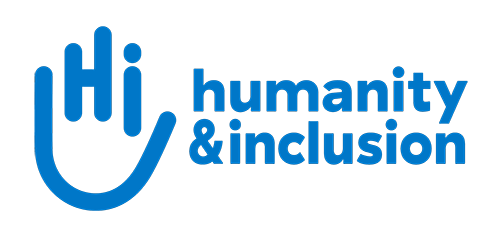The 3D printing revolution
Taking rehabilitation to the next level
A history of innovation
Innovation is part of Humanity & Inclusion's DNA. The organization was founded in 1982 on the Thai-Cambodian border by a group of young French doctors to fit thousands of refugees who lost limbs to landmines with prosthetics made of leather, bamboo, and other locally-sourced materials. HI was the first humanitarian aid organization created to meet emergency orthopedic needs.
In 2016, HI and several partners launched a pilot study in Togo and Madagascar to produce prostheses and orthoses designed using 3D technology. Three years later, HI began testing the feasibility of expanding its 3D production of custom-made assistive devices in three refugee camps in Uganda.
In 2020, HI was awarded the Horizon Prize by the European Innovation Council for its Telerehabilitation for All project. HI is the first organization in the world to combine telerehabilitation and the production of 3D prostheses. HI provides physical therapy sessions by video link and produces prostheses remotely for amputees by scanning stumps and then 3D-printing prostheses.
For nearly a decade, HI has continued to expand its use of 3D printing across African countries and will soon launch a new pilot program in Yemen.
Meet Geraldo, our 3D pioneer
Geraldo is an energetic 6-year-old boy from Lomé, Togo.
Geraldo arrived at Humanity & Inclusion's rehabilitation center in central Lomé with his mom and younger brother.
Geraldo can walk unaided, but if you look closely, you can see that his right foot drags and turns out a little. This makes it tricky for him to play soccer, and as he grows older, this instability will cause Geraldo significant pain and mobility problems.
Geraldo is excited to try out his new splint – he knows that it’s a bit special!
© Xaume Olleros/HI
Geraldo’s splint was made in a small workshop not far from the rehabilitation center. The robotic arms of two cutting-edge 3D printers added layer upon layer of plastic to create Geraldo’s new, precisely-measured device.
Worn only at night, the splint will gradually ease his bones into a better position.
All Geraldo needs to do is to stay still during the scan!
The 3D scanner
Two weeks earlier, a hand-held scanner was used to create a digital 3D image of Geraldo’s leg. This data allows Humanity & Inclusion's teams to create a made-to-measure and adaptable splint to suit Geraldo’s specific rehabilitation needs.
© Xaume Olleros/HI
The moment of truth has arrived...
The splint perfectly matches the contours of Geraldo’s lower leg and ankle. Thanks to the 3D scan, HI has been able to produce his personalized splint remotely.
...it's a perfect fit!
"I’ll soon be ready to play soccer!"
A real game-changer
3D technologies offer hope for the 40 million people globally who are in need of an artificial limb or brace as part of their rehabilitation. Many of these people live in isolated areas or conflict zones where they cannot access care.
The 3D scanning system is lightweight, portable and simple to use, making it possible to take measurements in challenging conditions. Splints, braces and prostheses can be produced remotely via 3D printing and delivered to those most in need.
“A person with a disability who needs a prosthesis has to travel to a rehabilitation center for treatment by professionals at each stage of care. There are few or no centers in many parts of the world. Armed conflicts can also restrict travel. Since 2016, we have developed our telerehabilitation activities to provide rehabilitation care to people who are isolated or unable to access services. By using digital technology combined with 3D printing, we can now produce and supply high-quality prostheses and orthoses for less money, and provide rehabilitation care to people we were unable to access previously.”
–Isabelle Urseau, HI's Technical Director of Rehabilitation
Read more

Jamaima, orthotist: a profession of service to others
Jamaima Naluggya, an orthotist, is heading a project to develop the 3D printing of prostheses and orthoses in refugee camps in Uganda. This is the story of her commitment to helping others.

3D printing innovation restores hope in Uganda: Hakim's story
Humanity & Inclusion (HI) is using telemedicine and 3D printing to provide physical rehabilitation services for refugees in Uganda. This work not only helps to improve people's mobility, but it gives them the ability to regain independence and restores hope.

Kennedy walks with 3D-printed braces, rehabilitation care
Kennedy has cerebral palsy. After years of being unable to stand or walk, braces and physical therapy have helped him achieve incredible progress.
Support our work
Like Geraldo, dozens of children and adults in Togo, Uganda, and Yemen are helping HI to test 3D-printed rehabilitation devices.
Show your support for this pioneering project!
ABOUT US
Humanity & Inclusion U.S.
8757 Georgia Avenue
Suite 420
Silver Spring, MD 20910
MORE INFORMATION
Humanity & Inclusion is a nonprofit 501(c)(3) organization (EIN/tax ID number: 55-0914744). Contributions are fully tax-deductible to the extent allowable by law. CFC #51472
None of the funds donated through this website will benefit activities in the following countries: Cuba, Iran, North Korea, the Crimea Region, or Syria. Humanity & Inclusion does not have programs in all of these countries.



